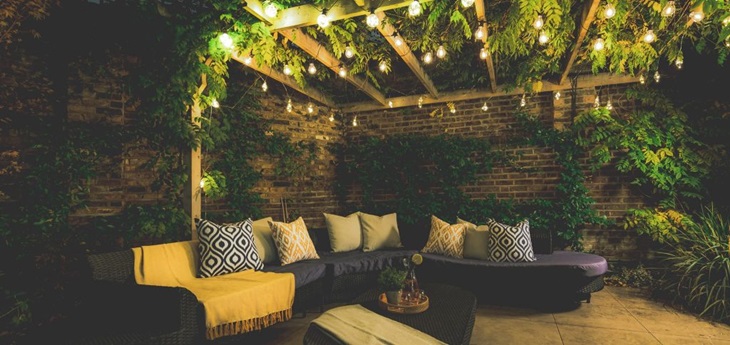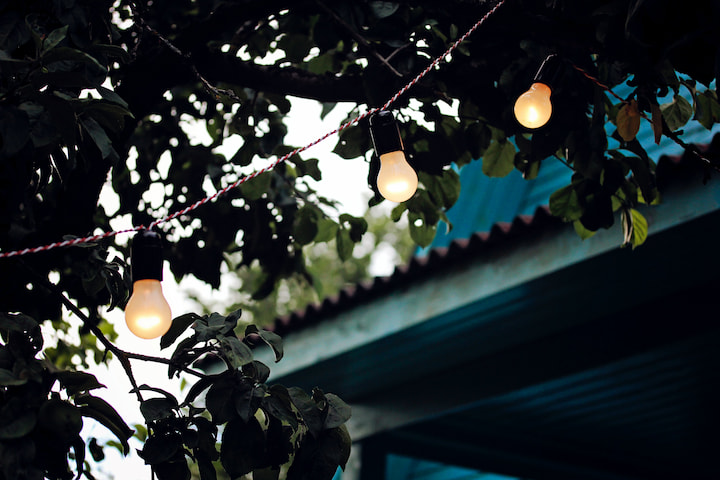If you’re one of those highly motivated gardeners who enjoy the beauty of outdoor spaces, then you probably know how much of a difference proper lighting can make in the whole experience. It doesn’t matter if you’re planting from seed or buying plants from a nursery, the right type of lighting can truly transform your garden into an illuminated paradise. After all, how else would you show off your hard work and dedication to your green oasis?
When you think about it, it’s both a practical and aesthetic addition to your outdoor space. You’ll get a fully functional garden that you can also enjoy during the night, and the added ambience creates a cosy atmosphere that makes it perfect for outdoor gatherings or simple relaxing moments after a long day. This can inherently extend the time you spend in your garden, and who wouldn’t want that?

What Lights Do You Need for Your Garden?
As is the case with virtually anything else, there’s a wide variety of fixtures for garden lighting to create a cosy and inviting space. Some have a greater decorative purpose, while others will be more geared towards providing sufficient light for visibility and safety. Below are some of the most popular types of lights you can choose from:
Traditional Fixtures
These include lanterns, wall fixtures, and hanging lights, among others. Traditional fixtures are perfect for creating a classic and timeless look in your garden space and come in various designs to suit different styles. They can be used to light pathways and patios or create dramatic focal points.
They’re seen as traditional because they come with familiar shapes and styles, but don’t underestimate their potential in providing contemporary lighting solutions. They’re quite versatile, meaning that you can easily find traditional fixtures to suit the style of your garden.
Spike Lights
These are a type of garden light mounted on spikes, and are perfect for highlighting specific areas in your outdoor space, such as flowerbeds, trees, or water features. They’re quite easy to install, and their adjustable heads allow you to direct the light wherever you want. While not as decorative as traditional fixtures, they’re essential for creating depth and dimension in your garden.
For instance, if you want to highlight a certain tree or shrub in your garden, simply position spike lights around it and angle the light upwards towards the plant. This creates a stunning effect and adds an extra layer of interest to your garden.

Bollard Lights
These are tall and slim fixtures that are typically used to line paths, driveways, or flowerbeds. They provide a soft, diffused light that’s perfect for creating a welcoming and safe path to your outdoor space. As they’re quite slim, they won’t be an eyesore in your garden during the day.
Their design brings a more contemporary feel to your outdoor space and can be used in combination with other types of garden lights for more layered lighting effects. For example, placing them along a pathway and adding spike lights to highlight plants along the way can create a beautiful and functional lighting solution.
Pond Lights
As the name suggests, these are lights that are specifically designed for use in or around water features such as ponds or fountains. They add a stunning visual element to your garden at night and also help improve safety by illuminating the water’s edge. Pond lights come in various hues, and some even have colour-changing options for a more dynamic effect.
Naturally, they’re not as versatile as other types of garden lights, but they’re a must-have if you have a water feature in your garden. They can also be used to highlight the surrounding vegetation or add depth and interest to the water itself.

How Do You Choose Garden Lights?
So how do you know which garden lighting actually works for your outdoor space? Is it really as easy as picking the most aesthetically pleasing option and calling it a day? Not quite. There are several factors to consider before making your final decision, including:
Purpose of Lighting
The first thing you’ll want to consider is the reason why you want to install garden lights. Is it for functional purposes, such as lighting pathways or creating a safe outdoor space? Or are you looking for more decorative options that add visual interest and ambience? Knowing the purpose of your lighting will help determine the types of fixtures and placement in your garden.
Garden Size and Layout
The size and layout of your outdoor space will also play a significant role in choosing the right lights. For instance, if you have a large garden with multiple pathways and areas to highlight, you may need more lights to achieve proper visibility and aesthetic appeal. On the other hand, a smaller garden may only require a few well-placed fixtures for the desired effect.
Style and Aesthetic of Your Outdoor Space
If your garden has a more traditional or classic look, then traditional fixtures may be the way to go. For a modern and contemporary style, bollard lights and spike lights can work well. Both the style of your garden and the desired aesthetic should be considered when choosing garden lights to ensure they complement each other. Let’s say you have a minimalist garden with clean, straight lines – in this case, you’ll want to avoid ornate fixtures and opt for simpler, sleeker designs.

Durability and Weather Resistance
The garden lights will be constantly exposed to the elements, so it’s essential to choose fixtures that are durable and weather-resistant. Look for materials such as stainless steel or aluminium that can withstand harsh weather conditions and won’t rust or deteriorate easily. If you really want to ensure longevity, look for fixtures with an IP rating of at least 65, meaning they have a high level of protection against dust and water.
Energy Efficiency and Operating Costs
Last but not least, don’t forget about the energy efficiency and operating costs of your chosen lights. LED lights are known for being energy-efficient and have a longer lifespan, making them a popular choice for outdoor lighting solutions. They’re quite cost-effective in the long run as they consume less energy and require less frequent replacement. However, their upfront costs may be higher compared to traditional lighting options, such as halogen fixtures.


















